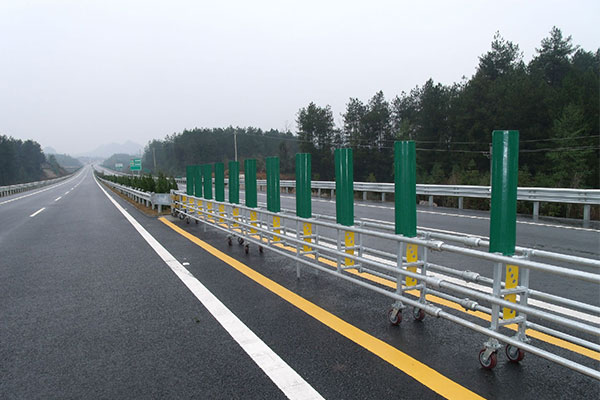What Are Highway Guardrails Made Of?
Highway guardrails are vital safety features designed to protect motorists and minimize the severity of accidents on roadways. These barriers play a crucial role in preventing vehicles from veering off the road, reducing the risk of collisions with hazardous objects or other vehicles. While their importance is widely recognized, many people may wonder about the materials used to construct highway guardrails. In this informative article, RoadSky will delve into the composition of highway guardrails, exploring the materials that make them sturdy, durable, and capable of safeguarding lives.

Steel: The Backbone of Highway Guardrails
Steel is the primary material used in the construction of highway guardrails. Its exceptional strength, durability, and resistance to impact make it an ideal choice for this critical safety feature. Guardrails consist of galvanized steel elements, including posts, panels, and rails. These components work together to create a robust barrier system.
- Posts: Guardrail posts are vertical supports embedded into the ground at specific intervals along the highway. These posts provide stability and serve as the anchor for the entire guardrail system. Steel posts are often galvanized to enhance corrosion resistance and prolong their lifespan.
- Panels and Rails: Guardrail panels and rails are horizontally placed components that connect the posts. They serve as the primary barrier, absorbing impact and redirecting vehicles away from potential hazards. Made of galvanized steel, these panels and rails are designed to withstand high-energy impacts and remain intact, providing a protective barrier between the roadway and surrounding obstacles.
Galvanization: Protecting Against Corrosion
Galvanization is a crucial process applied to steel components in highway guardrails. Galvanization involves coating the steel with a layer of zinc to protect it from corrosion caused by exposure to the elements, such as moisture, oxygen, and road salts. This process extends the lifespan of the guardrails and ensures their structural integrity.
During galvanization, guardrail components undergo a series of steps. The steel is first cleaned to remove any impurities, then immersed in a bath of molten zinc. The zinc forms a protective layer over the steel, creating a barrier against corrosive elements. This galvanized coating acts as a sacrificial layer, corroding in place of the underlying steel. As a result, the guardrail maintains its strength and structural integrity over an extended period, even in harsh environmental conditions.
Types of Steel Used in Highway Guardrails
- Structural Steel: Highway guardrails are typically constructed using structural steel, which possesses excellent load-bearing capabilities. This type of steel is known for its high strength and resilience, allowing guardrails to withstand the forces exerted by colliding vehicles.
- High-Tensile Steel: High-tensile steel is commonly used in guardrails due to its remarkable strength-to-weight ratio. This steel variant offers enhanced strength without sacrificing flexibility, allowing guardrails to absorb impact energy effectively.
- Weathering Steel: In some cases, guardrails are constructed using weathering steel, also known as Corten steel. This type of steel develops a protective layer of rust over time, which acts as a natural barrier against corrosion. Weathering steel is particularly suitable for guardrails in regions with harsh weather conditions.
Additional Elements and Accessories
Highway guardrails often incorporate additional elements and accessories to enhance their effectiveness and visibility.
- Reflective Sheeting: Reflective sheeting is applied to guardrail panels and posts to enhance visibility, especially during nighttime or adverse weather conditions. This reflective material helps drivers see the guardrail more clearly, enabling them to stay within the designated roadway.
- End Treatments: Guardrail end treatments are specialized structures designed to reduce the severity of impacts at the beginning and end of guardrail systems. These treatments typically consist of energy-absorbing materials, such as specially designed end terminals or impact attenuators, which can cushion the force of a collision and redirect the vehicle away from potential hazards.
- Breakaway Systems: In some cases, guardrail systems incorporate breakaway features. These mechanisms allow guardrail components to detach or yield upon impact, reducing the risk of severe vehicle damage and injury to occupants.
Conclusion:
Highway guardrails are essential safety features that protect motorists and help prevent severe accidents on roadways. Constructed primarily of galvanized steel, these barriers are designed to be sturdy, durable, and resistant to impact and corrosion. The galvanization process ensures long-lasting protection against environmental factors, extending the lifespan of guardrails. By understanding the materials used in highway guardrails and their structural components, we can appreciate the engineering behind these critical safety features that safeguard lives and promote safer journeys on our roadways.

